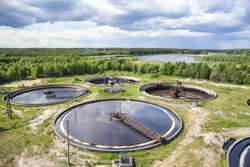Converting wastewater into electricity
Microbial electrochemical cells are a promising technology to exploit the potential for renewable energy but conversion efficiencies have limited cost-effective implementation. EU support of the project BEC-ME enabled scientists to develop improved electrodes based on carbon nanotubes. This enhanced bacterial adhesion to the electrode and improved electron transfer and substrate oxidation.Carbon offers good biocompatibility, chemical stability and conductivity at a low cost. Nanomaterials have higher surface area to volume ratios and are perfect for increasing bacterial immobilisation capability with enhanced bacterial sorption compared to conventional porous media.Similar to conventional fuel cells, catalysts are critical to conversion efficiency. In this case, the catalysts are electroactive biofilms immobilised on the electrodes and the team prepared them from carbon nanotubes. Nitrogen can increase positive charge and promote bacterial adhesion. The team tested several nitrogen-containing modifiers including acids, bases and diazonium salts. Modification of the carbon nanotubes with diazonium salts demonstrated increased power generation of the microbial electrochemical cells that correlated with higher surface nitrogen content.Researchers then investigated the conversion of conducting polymer nanotubes into nitrogen-containing carbon nanotubes. The team carbonised nitrogen-containing conducting polymer nanotubes (polyaniline and polypyrrole) to again exploit the benefits of carbon, nitrogen and the nanotube architecture. Electrochemical performance of the microbial electrochemical cells was further improved compared to carbon nanotubes alone.BEC-ME made important progress in the identification of electrode materials and modification processes that enhance the efficiency of microbial electrochemical cells in generating electricity. Making industrial-scale application of the technology possible could provide an important source of renewable energy at wastewater treatment plants in cities and towns.
Keywords
Wastewater treatment plants, microbial electrochemical cells, carbon nanotubes, nitrogen, conducting polymer nanotubes

